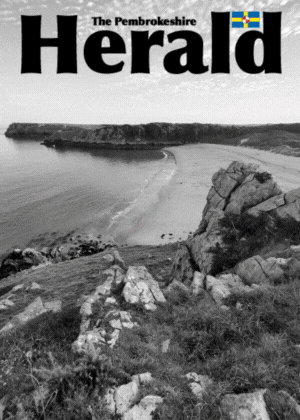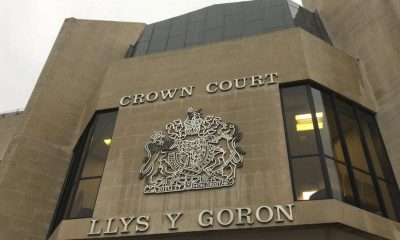News
IPPG cover blown

• Deputy Leader used Council I.T. for “party political purposes”
• Standards Committee to decide punishment

CLAIMS that the ruling IPPG and its predecessor IPG are not organized as a political party lie in shreds as a hard-hitting investigation by the Public Services Ombudsman for Wales lays bare the extent to which the discredited IPPG administration used Council computer facilities to co-ordinate its election campaigns.
Under its old title of the IPG, the current and former Council leadership used tax-payer funded facilities to run its campaigns and produce its election literature. In a breach of the statutory Code of Conduct governing Council members, Deputy Leader of the Council Rob Lewis has admitted using Council computers and infrastructure to both produce election literature and plan election campaigns for the elections that took place in both 2008 and 2012.
A detailed Ombudsman’s report is to be considered by the Council’s Standards Committee next Tuesday, March 18. The members of the Committee carry out a statutory function to promote and maintain high standards of conduct by Members and Co-opted Members of the County Council and Members of all Community Councils in Pembrokeshire. While the Council’s Code of Conduct permits political groups to use Council I.T. infrastructure to co-ordinate their actions for the efficient transaction of Council business, it does not allow Councillors – for obvious reasons – to use the same technology to produce their own election literature, co-ordinate election campaigns, or access Council data for party political ends.
Councillor Lewis is quoted in the report as saying that he could not justify the use of the Council’s computer system and said, “… I’m obviously wrong, I know that.”
His admission flies in the face of repeated public pronouncements by the IPPG leadership that they are genuinely independent, and do not operate as a political party. It reveals that at the last two elections – at least – the Pembrokeshire electorate have been actively deceived by those seeking their vote on the basis that they are not affiliated to a party group.
In 2008, then IPG Leader John “Cwmbetws” Davies told the local media:
“The IPG is a coalition of individuals who have established a group to allow the county council to be administered by the majority of the membership of the council. This clearly reflects the wishes of the voters of our county.”
Documents considered by the Ombudsman demonstrate that current Cabinet spokesperson for Education, Ken Rowlands, appeared on a list of IPG certainties in an IPG strategy document produced in April 2008 when the self-proclaimed “voice of Johnston” has strongly asserted elsewhere that he only chose to join the IPG AFTER the subsequent election.
The extent of the deception perpetrated by the IPG hierarchy and its camp followers is exposed by the fact that in 2012 only 14 of the 31 candidates who were already members of the IPG chose to use the word “independent” in the description box on the ballot paper, while the other 17 opted to leave it blank.
Having been caught out by the fact that the documents co-ordinating campaign strategy for the allegedly “Independent” Political Group were traced to his Council computer and log-in, Cllr Lewis seems to have tried to deflect blame and criticism. The way in which he elected to do so was by repeatedly criticising the conduct of members, who had revealed and publicised the way in which he and the IPG had deceived the Pembrokeshire electorate. The Ombudsman’s report contains a number of emails by Cllr Lewis sent to the Ombudsman apparently complaining that Cllrs Mike Stoddart and Jacob Williams were making use of what he refers to as “stolen data” to reveal on their websites the extent to which he, now-retired Councillor David Wildman, and the IPG had broken Council rules.
The Ombudsman’s investigator evidently gave short shrift to Cllr Lewis’ complaints, as no criticism of either Councillors Stoddart or Williams is made in his report. The allegations made against those Councillors appear to be more founded in their revelation of the extent of the lies told – whether actively or by omission – by the IPG and their candidates to their electors.
Mike Stoddart told The Herald:
“The simple fact is that the party of government used taxpayer-funded facilities to promote their election campaign. Put another way, they found a way to use taxpayers’ money to undermine the principle of free and fair elections which we all value.”
Notwithstanding his admission that he breached the Code of Conduct, Cllr Lewis has asserted – contrary to the findings of the Ombudsman – that he has not breached the Code of Conduct by using the Council’s I.T. to produce strategy documents. This is a potentially revealing insight into the attitude of the IPG, as Cllr Lewis appears to have confused the transaction of IPG electoral business with the permitted transaction of internal Council political business.
Such is the overwhelming nature of the evidence against Cllr Lewis that the disputed documents read in context underline the extent of his wrongdoing and that of the IPG as a whole. Furthermore, as the breaches do not require guilty intent to be proved, it remains to be seen what the Standards Committee make of Cllr Lewis’ unrepentant stand on this subject and what finding of fact they make in relation to it.
In January, Council Vice-Chairman Tom Richards – a member of the IPPG – recused himself from sitting in judgement on the basis he was identified as a candidate in some of the documents. Cllr Stanley Hudson also recused himself on the basis of his close personal association with the original complainant to the Ombudsman, Cllr David Bryan. The members of the Committee making a decision next week will therefore be lay members Messrs Ian Williams, David Morgan and Andre Morgan and Community Councillor and Haverfordwest solicitor, Mr George Allingham.
While the part of January’s meeting dealing with Councillor Lewis was held in private, the publication of the Ombudsman’s report and detailed documents should militate against the public being excluded on Tuesday.
The members have the power to censure a member, or suspend or partially suspend a member for a period not exceeding 6 months. The maximum penalty available to the Adjudication Panel for Wales is five years’ disqualification from office.
The Pembrokeshire Herald will carry a detailed report of the Committee proceedings next week.
Community
Craig Flannery appointed as new Chief Fire Officer

MID AND WEST WALES FIRE SERVICE LEADERSHIP CHANGE
MID and West Wales Fire and Rescue Service has announced the appointment of Craig Flannery as its new Chief Fire Officer, with effect from Monday, December 15, 2025.
Mr Flannery has served with the Service for more than twenty years, progressing through a wide range of middle management and senior leadership roles across both operational and non-operational departments.
During his career, he has been closely involved in strengthening operational delivery, risk management and organisational development. His work has included leading innovation in learning and development, overseeing the Service’s On-Call Improvement Programme, and driving investment in key enabling functions such as workforce development and information and communication technology.
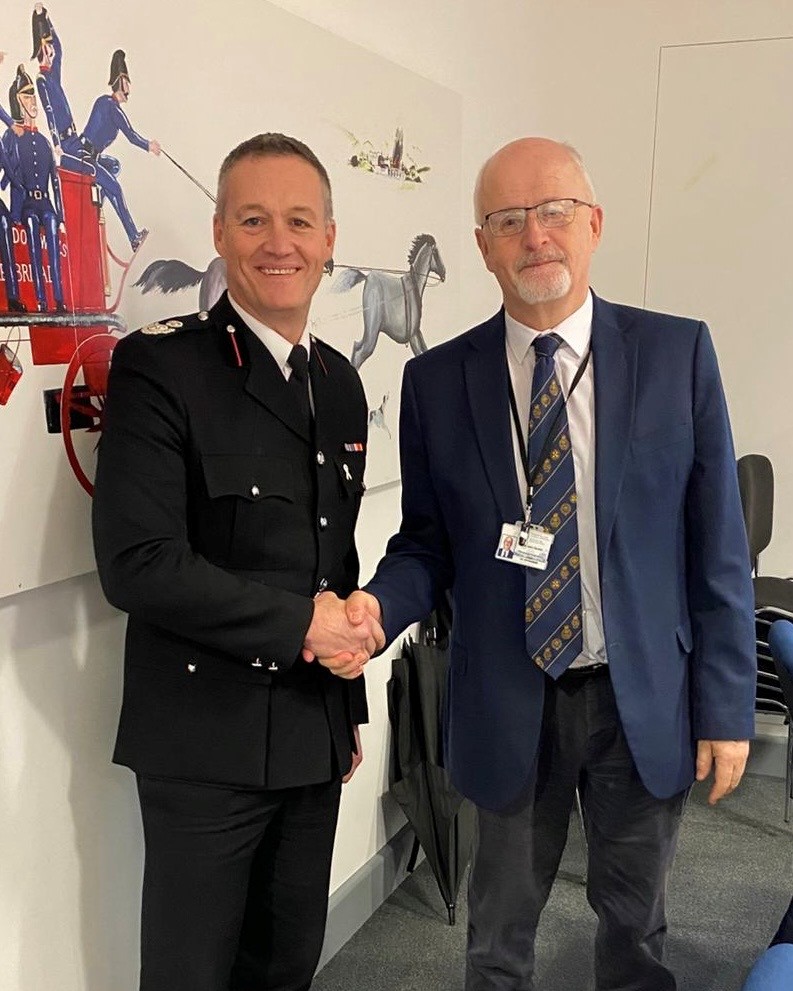
The appointment followed a rigorous, multi-stage recruitment process led by Mid and West Wales Fire and Rescue Authority. Candidates were assessed through structured interviews, strategic leadership exercises and scenario-based assessments designed to test operational judgement, organisational vision and the ability to lead a modern fire and rescue service.
External professional assessors were also engaged to provide independent scrutiny, ensuring the process met high standards of fairness, transparency and challenge.
Mr Flannery emerged as the strongest candidate, demonstrating clear strategic leadership capability, detailed organisational knowledge and a strong commitment to community safety and service improvement.
Councillor John Davies, Chair of Mid and West Wales Fire and Rescue Authority, said: “Craig brings a deep understanding of our Service and a clear vision for its future. His appointment will strengthen our ability to innovate, support our workforce and deliver high-quality protection for the communities we serve.
“As we navigate a rapidly changing landscape, Craig’s experience in driving innovation and organisational development will be invaluable in helping us adapt and transform for the future.”
Commenting on his appointment, Mr Flannery said: “It is a privilege to lead this outstanding Service. I am committed to supporting our people, strengthening partnerships and building on the strong foundations already in place.
“As the challenges facing fire and rescue services continue to evolve, we must modernise and innovate, ensuring we have the skills, technology and capability needed to meet the needs of our communities. I look forward to working with colleagues and partners across Mid and West Wales to deliver a resilient, progressive Service that keeps people safe and places our staff at the heart of everything we do.”
Health
Resident doctors in Wales vote to accept new contract

RESIDENT doctors across Wales have voted to accept a new contract, with 83% of those who took part in a referendum backing the agreement, according to BMA Cymru Wales.
The contract includes a four per cent additional investment in the resident doctor workforce and introduces a range of reforms aimed at improving training conditions, wellbeing and long-term workforce sustainability within NHS Wales. The BMA says the deal also supports progress towards pay restoration, which remains a central issue for doctors.
Key changes include new safeguards to limit the most fatiguing working patterns, measures intended to address medical unemployment and career progression concerns, and reforms to study budgets and study leave to improve access to training opportunities.
Negotiations between the BMA’s Welsh Resident Doctors Committee, NHS Wales Employers and the Welsh Government concluded earlier this year. Following a consultation period, a referendum of resident doctors and final-year medical students in Wales was held, resulting in a clear majority in favour of the proposals.
Welsh Resident Doctors Committee chair Dr Oba Babs Osibodu said the agreement marked a significant step forward for doctors working in Wales.
He said: “We’re proud to have negotiated this contract, which offers our colleagues and the future generation of doctors safer terms of service, fairer pay, and better prospects so that they can grow and develop their careers in Wales.
“This contract will help to retain the doctors already in training, and also attract more doctors to work in Wales, where they can offer their expertise and benefit patients.”
Dr Osibodu added that the BMA remains committed to achieving full pay restoration and acknowledged that challenges remain for some doctors.
“Whilst this contract sets the foundations for a brighter future for resident doctors in Wales, we recognise that there are still doctors who are struggling to develop their careers and secure permanent work,” he said. “We need to work with the Welsh Government and NHS employers to address training bottlenecks and underemployment.”
The Welsh Government has previously said it recognises the pressures facing resident doctors and the importance of improving recruitment and retention across NHS Wales, while also highlighting the need to balance pay agreements with wider NHS funding pressures and patient demand.
The new contract is expected to be phased in from August 2026. It will initially apply to doctors in foundation programmes, those in specialty training with unbanded rotas, and new starters, before being rolled out to all resident doctors across Wales.
Crime
Swansea man jailed for online child sex offence dies in prison

A SWANSEA man who was jailed earlier this year for attempting to engage in sexual communication with a child has died while in custody.
Gareth Davies, aged 59, of the Maritime Quarter, was serving an 18-month prison sentence after being convicted in May of sending sexually explicit messages to what he believed was a 14-year-old girl. The account was in fact a decoy used as part of an online safeguarding operation.
The court heard that Davies began communicating with the decoy between November and December 2024 and persistently pursued the individual, later attempting to arrange a face-to-face meeting. He was arrested after being confronted by the decoy operators.
Davies had pleaded not guilty but was convicted following a trial. At the time of sentencing, police described the messages as extremely concerning and said his imprisonment was necessary to protect children.
It has now been confirmed that Davies died at HMP Parc on Wednesday (Nov 27) while serving his sentence.
The Prisons and Probation Ombudsman has launched an independent investigation into the death, which is standard procedure in all cases where someone dies in custody. No cause of death has been released at this stage.
A coroner will determine the circumstances in due course.
-

 Crime2 days ago
Crime2 days agoMilford Haven man jailed after drunken attack on partner and police officers
-

 News5 days ago
News5 days agoDyfed-Powys Police launch major investigation after triple fatal crash
-

 Crime2 days ago
Crime2 days agoTeenager charged following rape allegation at Saundersfoot nightclub
-
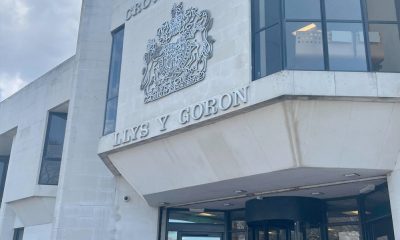
 Crime3 days ago
Crime3 days agoMan charged with months of coercive control and assaults
-

 Crime3 days ago
Crime3 days agoMan sent to Crown Court over historic indecent assault allegations
-

 Crime5 days ago
Crime5 days agoMan spared jail after baseball bat incident in Milford Haven
-
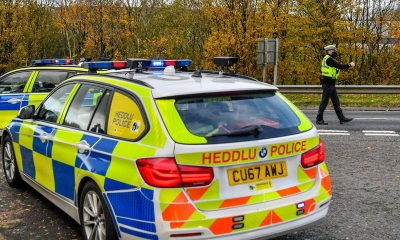
 Crime3 days ago
Crime3 days agoMilford Haven man admits multiple offences after A477 incident
-

 Crime3 days ago
Crime3 days agoWoman ‘terrified in own home’ after ex breaches court order







